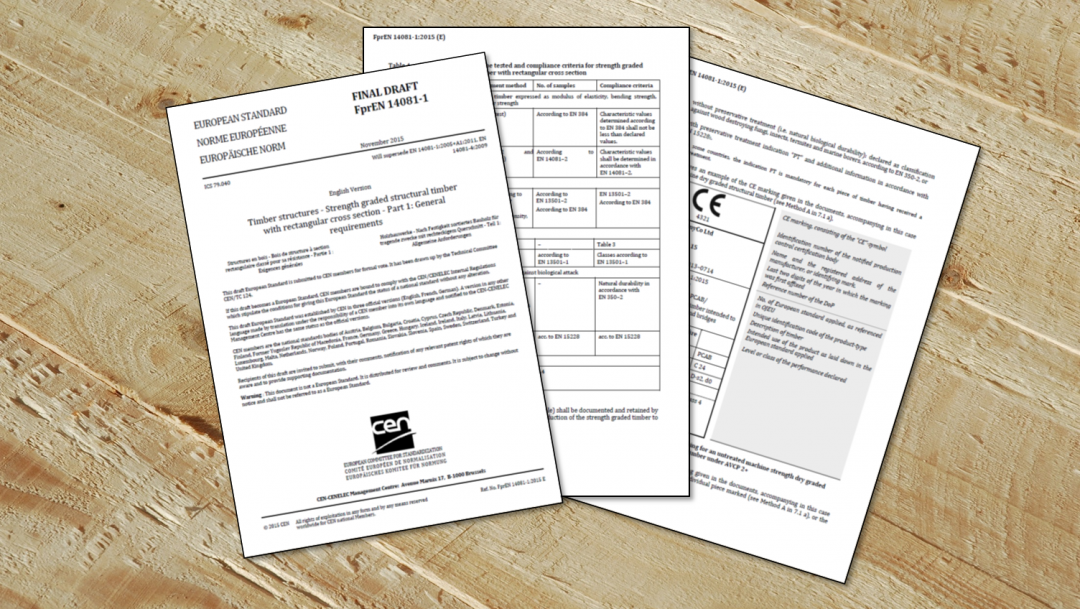
There is a proposed new version of EN14081-3 out for Enquiry, mostly to provide proper integration of the updated output control rules (compared to the 2018 amendment version). Importantly, this is the standard that contains the rules for using control planks (Annex A). These are not changed in the proposed draft, but now would be the time to raise any issues with what is in the standard regarding this. You can contact via d.ridleyellis@napier.ac.uk
There is a second amendment of EN384 out for Enquiry. This clarifies the length of samples required (including now for tension testing) and changes the description for adjusting measured properties for moisture content.
Specimens for strength testing need to be long enough to be able to locate the critical defect (the supposed weakest region in the beam) within the test zone. The amendment makes it clearer that the lengths given are guidance examples that are sufficient but not necessary – and that judgement of what is appropriate should consider both the nature of the timber and the lengths representative of industrial practice so as not to bias the results. Since it is easier to position a critical defect in the test zone in a tension test than a bending test, the new example of specimen length for tension is more relaxed.
The information for bending tests is not changed, just clarified: a length of at least 30 times the depth or 3.6 m whichever is the lesser meets this requirement. Shorter lengths might be accepted if they are justified in the report and meet the requirements of EN 408.
There is now also equivalent guidance for tension tests: For tension specimens, a length of at least 2 m plus the length required for the grips meets this requirement.
Shorter lengths might be accepted if they are justified in the report (see Clause 8) and meet the requirements of EN
408.”
The clause for adjustment for moisture content is reformatted into subsections, with a new section of general text that now takes proper account that the given adjustments might not always be appropriate – instead you are told to use the “best available information”, with the given adjustments described as simplified adjustments to use in the absence of better information. Previously there was no moisture content adjustment for bending or tension strength (only compression strength). This proposed amendment is less clear about the expectation for adjusting bending and tension strength, which might lead to some long discussions at TG1… (unless the amendment is clarified).
There is amendment also for EN14081-2, which clarifies the intended meaning of clause 8.3.3 (verification of machine settings). Text like “the setting shall be verified” is rather ambiguous – meaning either that the verification is confirmed, or that the verification must be done. There is no other proposed change to this standard other than a note referring to EN14081-3 for output control systems.

Leave a Reply
You must be logged in to post a comment.